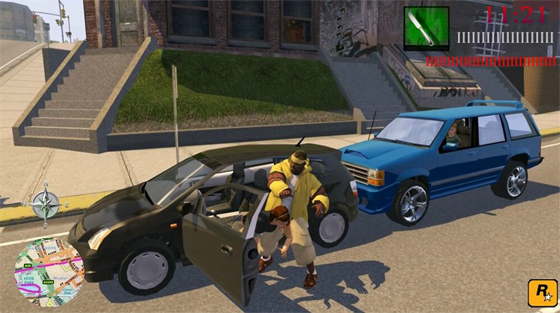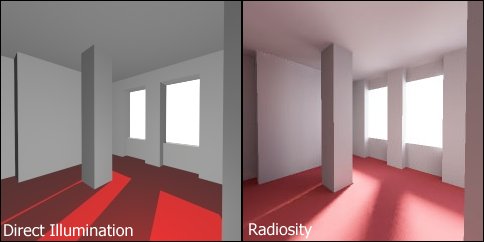Real Time Graphics is Virtual Reality
31/07/2011
When I tell people my interest is in computer graphics, most people don't really know how to react. Much like anything to do with computers, trying to explain it often leads to more confusion than enlightenment. Even to people who have experience with programming, unless they've done graphical programming, the whole thing can seem like a box of magic tricks. In most peoples' heads I imagine "graphics" conjures up images of crude wireframes and sharp polygonal models from the 90s, when graphics were "new" and "experimental". Of all the responses I remember one particularly well. I was talking to a man in his 60s, an insurance salesman from Yorkshire. His response was something along the lines of:
"So, you're basically making killing people and stealing cars in GTA more realistic."
At the time it didn't even seem like too bad a response. In some ways it was a fair trade. Computer graphics are clearly not one of his interests, and insurance is most definitely not one of mine. What he said was somewhat true in its sentiment, but it remains a rather depressing way to look at it.

And I can't help but finding myself wanting to fight the fight. I wish I could bring more people around to the art, observation, maths, science and problem solving behind graphics! Even gamers see graphics as a very linear and steady progression. You buy a better graphics card - you get better graphics. At the end of the day few care, or really want to know about the details.
To me the fascination is exactly in the details. Sometimes I feel like I'm viewing the world in twice - there is so much more I see! I could tell you the type of shadow your laptop is casting - I could give you the component parts of that shadow and outline them for you. I could tell you why your fingers glow red when you put them right up to a light, and how headlights reflect across a wet road. But graphics gives you even more than that! It tells you so much about the world in general. Through building virtual objects you learn about the real ones. I could tell you about the different ships in the 15th and 16th century, their parts, purposes, strengths and weaknesses. I could tell you in depth about renaissance sword fighting techniques, about the anatomy of a goat, the ways birds can fly and the mechanism for wheellock rifles. Of everything I've studied, I've found nothing more enriching to my world view.
In my opinion computer graphics is one of the most interesting fields in computer science. It has huge amounts of investment, research and some exceptionally smart people at the forefront. Progress is made by brilliant ideas over processing power. My favourite example is a new technique used to emulate a phenomenon called radiosity. This technique is called Sphereical Harmonics (or Precomputed Radiance Transfer if you like). The effect it emulates, radiosity, is basically when light reflects off a colored surface onto some other surface, lighting that up with some of its own color.

This technique was first developed in 2002 by Peter-Pike Sloan, Jan Kautz and John Snyder at Microsoft. It combines maths from all kinds of research areas, in some spectacular ways. But the real core of up and coming research is what is fascinating, because it's borrowing from various quantum physics papers that are using similar Spherical Harmonics models for looking at the rotation of quantum particles. There are stories of e-mail exchanges between the physicists and the programmers, with the programmers requesting help mapping the maths from complex-number space to real-number space so that it can be done on a processor.
All this is where virtual reality will come from. Not from the CGI movies, but from games, because they are interactive, and render images at 60 times a second. This is how I like to look at real-time graphics.
If I became a billionaire overnight I would hire the world's greatest environmental artists and graphical programmers and my game would be a recreation of all the most beautiful places on earth in stunning realism. Because, if I can settle down for the evening in my living room and experience in true virtual reality, with feeling smell sound and sight, the the sun set over the Himalayas - a casual walk along the Great Wall of China early in the morning, then why would I sit down and slog through several more hours of the next GTA?

The final note comes from John Carmack, the real inventor, and prolific innovator of, real time graphics. As well as his primary hobby being rocket science (proving computer graphics really is more interesting than rocket science!), he provides a quote which I think most people involved with graphics can really relate to.
"...after so many years immersed in the science of graphics, he [John Carmack] had achieved an almost Zen-like understanding of his craft. In the shower, he would see a few bars of light on the wall and think, Hey, that's a diffuse specular reflection from the overhead lights reflected off the faucet. Rather than detaching him from the natural world, this viewpoint only made him appreciate it more deeply. 'These are things I find enchanting and miraculous,' he said, 'I don’t have to be at the Grand Canyon to appreciate the way the world works. I can see that in reflections of light in my bathroom.'"